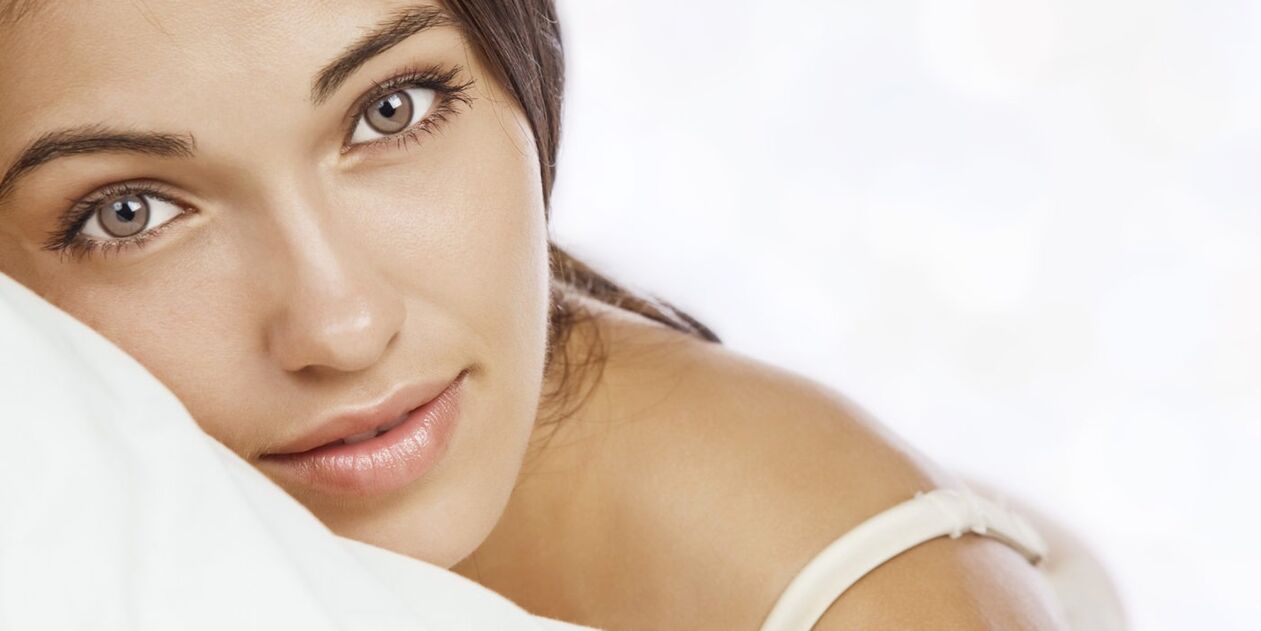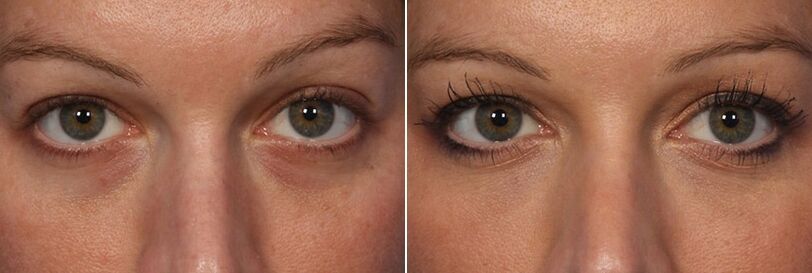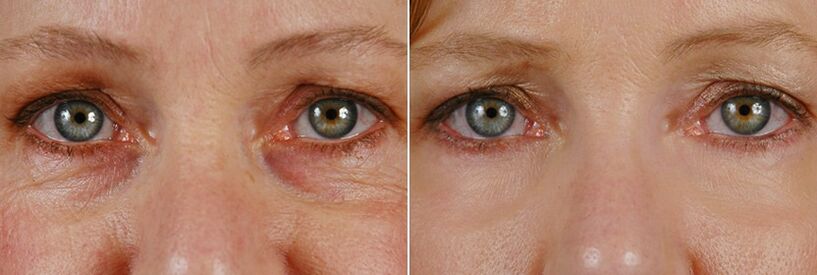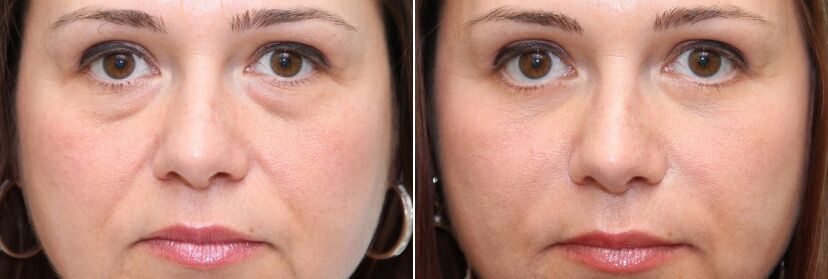
When it comes to determining whether a face is attractive or tired, the eyes are of utmost importance. An experienced eye can immediately determine all the secrets of our life and inheritance, looking only into our eyes. In medical terms, as we age, our body goes through a long series of changes, and the sensitive areas around the eyes are the first to show signs of these changes.
For some, these signs appear earlier, for others - later, but many of us wonder: what factors are responsible for the appearance of wrinkles and sagging eyelids and what can be done to join the league of owners of forever young eyes.
Unraveling the mystery of eye aging
Blepharochalasia is not only a strange, hard-to-pronounce word, but also a medical term for the appearance of excess skin around the eyes or the effect of heavy eyelids. This is a fairly common problem caused by the normal aging process, fatigue, allergies, slow lymphatic drainage, or a number of other medical conditions.
What is special about the skin around the eyes and why is it so delicate?
1. Aging
The skin around the eyes is seven to ten times thinner and more delicate than the skin on the rest of the face and body in general. As we age, the skin becomes even thinner due to the loss of collagen, elastin and hyaluronic acid (which keeps the skin hydrated). The delicate skin is stretched under the action of the fat body, which leads to noticeable sagging bags under the eyes. Protrusion of infraorbital fat is considered a common manifestation of the aging process. In addition, aging and a number of other factors affect the weakening of the muscles, which only worsens the condition of the bags under the eyes.
2. Genetic causes
Researchers recently conducted a study to identify risk factors that lead to drooping eyelids, with a particular focus on genetic factors. They studied two groups of people. The first group consisted of 5578 unrelated persons. 17. 8% of the participants in the group had moderately to severely drooping eyelids. In the second group, there were 2186 twin individuals, and 61% of the participants in this group had inherited drooping eyelids. These findings confirm the fact that the most common cause of drooping eyelids is heredity.
3. Sebaceous glands
The periorbital area is drier because there are fewer sebaceous glands compared to the skin on the rest of the face. Because of this, her lipid barrier is worse, and she is more prone to the creation of mimic wrinkles.
4. Skull
Prominent cheekbones and deep-set eyes. This is the cause of hollows under the eyes, the shadow of which creates the illusion that the skin under the eyes is darker, even if it is not. As we age, the facial bones of the skull change, and this situation only worsens.
5. Transparent capillaries
Dark circles under the eyes are actually the result of hemoglobin oxidation. Hemoglobin is the main component of red blood cells, it contains a heme group, whose iron atoms bind oxygen molecules.
In this way, red blood cells carry oxygen throughout the body and take away all waste products for destruction. When oxygen molecules bind to the heme group, red blood cells turn red. When the oxygen molecules are separated and the hemoglobin is oxidized, the red blood cells turn blue. This causes dark circles under the eyes. If red blood cells are visible through the capillaries around the eyes, then enzymes in the body interfere with the movement of red blood cells and oxidize them, turning them blue. When this happens, the waste is released into the bloodstream and carried throughout the body. Clear capillaries can also cause swelling or fluid retention in the body, making the face look puffy.
6. Toxins in the body
Dark circles under the eyes can indicate sleep problems or the presence of toxins in the kidneys or liver. According to traditional Chinese medicine, the top of the eye and the area just below the eye is the kidney area. Swelling and fluid retention in this area is a sign that the body has too much fluid (watery and swollen circles, blue shades) or that it is overloaded with mucus (fat and swollen, yellow shades). White or blue circles under the eyes indicate fatigue or exhaustion. A yellow shade indicates poor functioning of the liver and gall bladder. If the gallbladder is not up to the task of processing and breaking down fats in the body, this can contribute to the appearance of milia (tiny white-yellow bumps) around the eyes in some people.
7. Frequent eye movements
The skin suffers from the fact that you blink often and from facial expressions (for example, smiling), which are also called expression lines.
8. Iron
Iron may be another contributing factor. Red blood cells need iron atoms to bind oxygen molecules to themselves. When the iron content in your body is low, the red blood cells cannot bind oxygen to themselves, hence bluish circles appear under the eyes.
9. Lifestyle
Puffy eyes are another problem that can occur regardless of age or gender. It is caused by a diet rich in salt, smoking or alcohol. Due to an unhealthy lifestyle, dark circles and early wrinkles appear.
If you want to know how your eyes will change as you age, look at your parents. This will give you a clear idea of whether you will have large fat pads under your eyes. But you can try to change the genetic blueprint with the help of aesthetic medicine.
Other causes of skin deterioration in the periorbital area can be: stress, malnutrition or malnutrition, too much sleep or lack of sleep, excessive use of cosmetics (don't forget to wash it off every night), washing too often with products that dry the skin. skin (avoid alcohol in cosmetics) and damage from sunlight - photoaging.
Currently available treatments
Wrinkles, bags, dark circles, droopy eyelids are not only unsightly, but can also cause vision problems and headaches (from constant strain to open eyes). Many surgical and non-surgical treatments are available for tired, sagging or aging eyelid skin.
The choice of method for rejuvenating the area around the eyes depends on the type of disorder we are dealing with. For example, older upper eyelid skin may need to be tightened due to excess skin and muscle weakness. The lower eyelids may require treatment for puffiness and thinning of the skin, as well as removal of fat bags. Dark circles under the eyes require special treatment.

Volume and moisture: fillers
The easiest and most effective way to make the skin around the eyes smooth is with injectable fillers. They provide a natural look to the skin and help fight against inflamed eyes. And fillers improve the condition of dark circles by 15-20%, but they are practically useless in the fight against body fat. There are several types of specially formulated hyaluronic acid gels that reduce wrinkles around the eyes, giving the skin volume and moisture.

Laser skin rejuvenation
Laser surgery is a non-invasive method of tightening the skin around the eyes. CO2 laser rejuvenation or Fraxel is a very gentle way of gradually rejuvenating the skin of the eyelids, which can be used in parallel with fillers or surgical techniques.
Lasers on a microscopic level cause thermal injuries to the skin, to which the skin responds by rapidly healing and removing old damaged cells. Old cells are replaced by new, younger cells. The CO2 laser can also improve skin elasticity, texture and reduce fine or deep wrinkles, acne scars and freckles.

Surgical methods: blepharoplasty
If non-surgical methods do not give the desired result, blepharoplasty (or eyelid reduction surgery) is used. This procedure is a very effective way to achieve the desired look.
The surgeon makes small incisions on the eyelid and under the eyes, removes excess fat and tightens the skin, and then sutures the incisions. Removing fat pads under the eyes significantly reduces puffiness. Surgery can also remove droopy (hanging) eyelids, but it doesn't help combat dark circles or droopy brows - these problems should be dealt with separately.
Blepharoplasty is the only way to remove a protruding fat body, especially in overweight people (in such patients, excess fat accumulates under the eyes). But non-surgical methods work great for skin tightening, wrinkles and hollows under the eyes.














